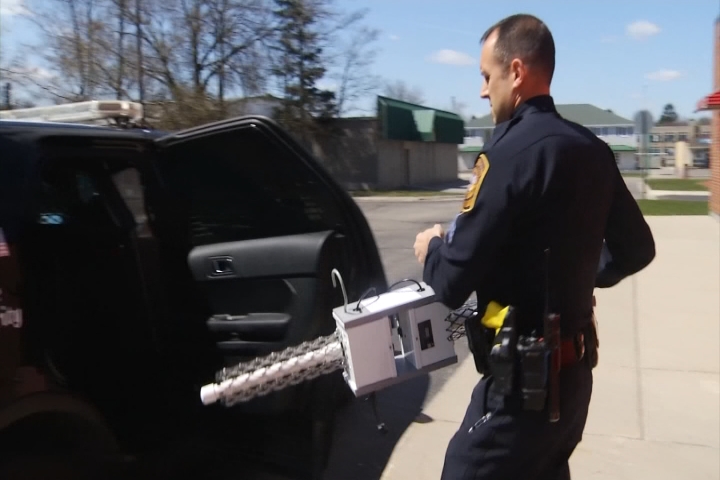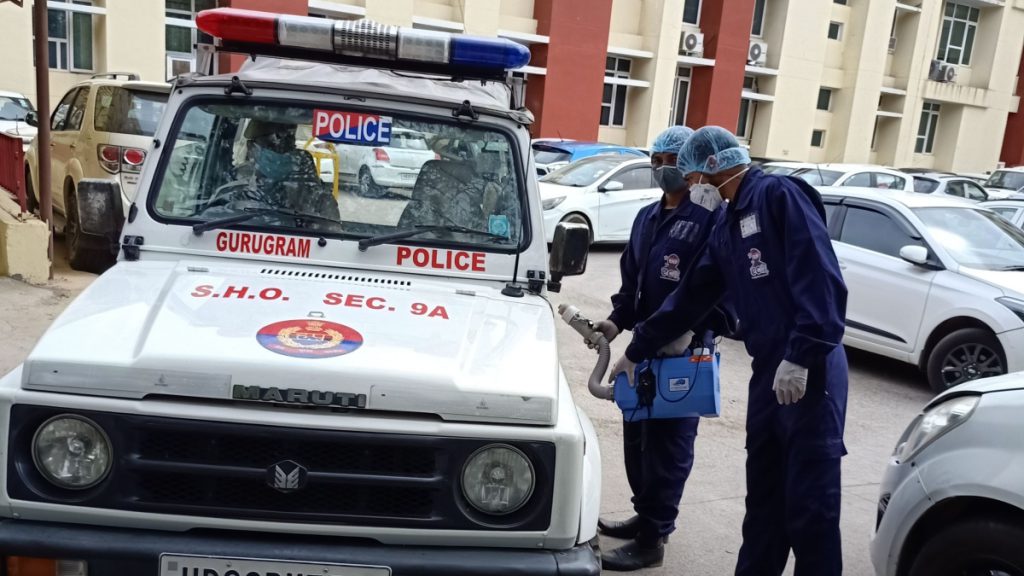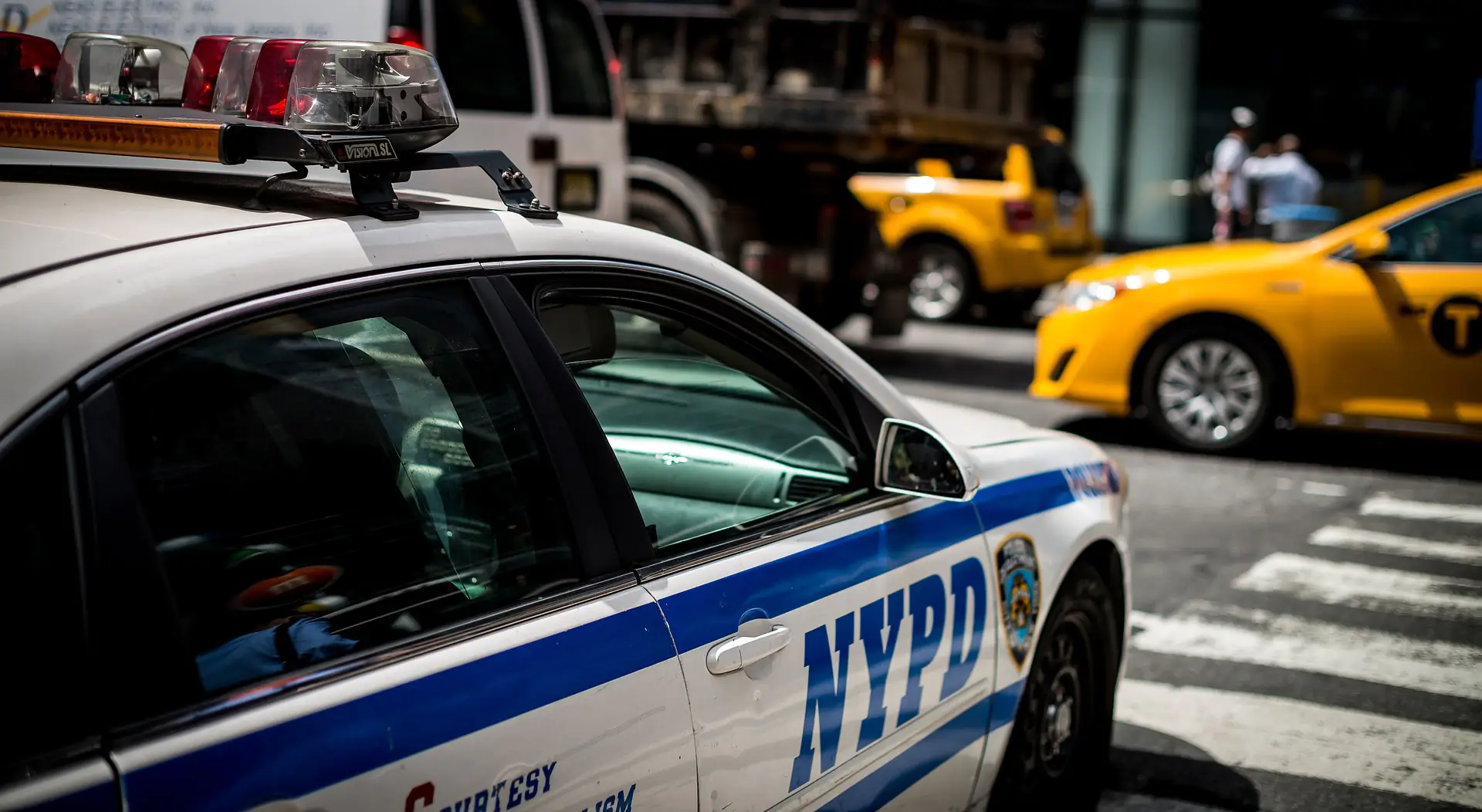Disinfecting the inside surfaces of police vehicles has become a frequent task to prevent the spread of COVID-19. According to a study from the National Institutes of Health, CDC, UCLA, and Princeton University scientists, the coronavirus is detectable in different surfaces for a long period.
For example, the virus can be found on copper for up to four hours, and up to two to three days on plastic and stainless steel. If an officer touches an infected surface and then touches his face, nose, or eyes, he could indirectly infect himself.
Therefore, law enforcement agencies are turning to high-tech innovations to disinfect patrol cars and keep officers safe. Here are some examples:
UV Tech

The Mount Pleasant Police Department (Michigan) has invested in new UV light equipment to sanitize vehicles and reduce their exposure to COVID-19. During car cleanings, the machines are placed for at least 15 minutes in every section of the vehicle.
“We don’t want to be exposed to anything and have people get sick. We want to be able to come here and help people respond to our calls and if we are sick, we can’t do that, so it’s just another measure to help sanitize our vehicles and help lessen our exposure,” said Sgt. Brandon Bliss.
While the lights do not replace other cleaning methods, and officers are still taking the recommended CDC precautions, such as handwashing and disinfecting surfaces with a cleaning solution, this tech adds extra protection.
UV-C light is a long-established disinfectant in health care settings and so the department is also using light to sanitize their personal protection equipment.
Fogger Machine and UV Light
The Roseville Police Department (California) has two new tech products to clean and disinfect its fleet: A disinfecting fogger and a UV light.
The disinfecting fogger machine sprays a fine mist throughout each of the cars. When the mist has dried, the vehicle is sanitized and ready to use.
“They can grab that fogging machine, spray that light layer over the top and let it sit for about 10 minutes. It dries and now the car is nice and clean, so everybody is staying safe and healthy,” Roseville Police Public Information Officer, Rob Baquera explained.
The second device is a GermAwayUV light. It uses two high-powered UV-C lamps to emit concentrated rays and sterilize a space containing various surfaces. Officers hang the lights in the back of the patrol vehicle, turn it on for 20 to 30 minutes, after which time it has killed all viruses and germs.
According to Baquera, both the GermAwayUV light and the fogger are easy and quick to use, and he added the most important message: “The officers want to stay healthy, they want to keep their families healthy and the community healthy.”
Germ-Shield Technology

Cars and motorcycles of the Gurugram Police fleet (New Delhi, India) will be given a Germ-Shield treatment to protect them from coronavirus, courtesy of the online automobile marketplace, Droom.
The Germ-Shield technology polymerizes any surface, resulting in a strong, durable, invisible, and effective barrier with a 99.99% microbial reduction rate. It’s proven to be effective against SARS and other droplet-based viruses for up to three months, but patrol cars will be sanitized daily.
“Keeping in mind the challenge that Gurugram police faces while dealing with the pandemic, we will be sanitizing their several vehicles on a daily basis until the nation achieves victory over COVID-19,” said Sandeep Aggarwal, Founder and CEO of Droom.
Nitika Gahlaut, Deputy Commissioner of Gurugram Police, said, “We are grateful to Droom for launching this service and protecting us against the highly-contagious coronavirus. It is our duty to ensure the health and safety of citizens and staying protected from the virus ourselves is a big part of protecting others. A major element of containing the coronavirus contagion is inhibiting surface-to-surface transmission, and Droom’s Germ-Shield technology is a big step towards this goal.”

